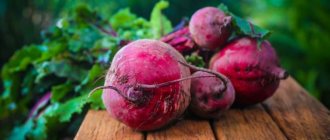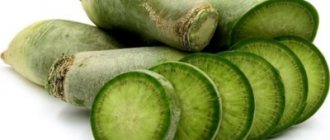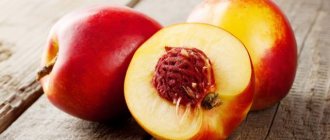Onion is a herbaceous plant of the onion family, one of the most important vegetable crops, widely used in cooking, folk medicine, and cosmetology. Onions have been cultivated for more than five thousand years, and nowadays they are used in the cuisines of all peoples of the world due to their unique taste. That is why it is important to know the calorie content of onions. Raw, dried, boiled, fried, pickled onions are added to soups, salads, sauces, vegetable stews, meat and fish dishes, used as a seasoning for canning and as a component of spicy mixtures.
Eating onions improves appetite, activates the secretion of gastric juice, accelerates digestion and absorption of food, and normalizes water-salt balance. Onion is a good diuretic, antiseptic, anthelmintic, anti-inflammatory, anti-sclerotic and anti-diabetic agent. Considering all these qualities, it is especially recommended to consume onions in winter.
Onions are divided according to the level of essential oils - sweet, semi-sharp, spicy and bitter; recently, mildly spicy, non-spicy, sweet delicacy and salad onions have appeared. It is noteworthy that the sweetest-tasting onion varieties contain the least amount of sugar, since the characteristic bitter taste of onions is given by essential oils, and their amount directly depends on the sugar content in the onion. This means that sweeter varieties of onions have less calories.
100 g of onion contains 40-43 kcal calories:
- Water – 86 g;
- Protein – 1.7 g;
- Carbohydrates – 10.5-11.0 g;
- Fiber – 0.8 g.
Composition of onions
Onions are a source of vitamins C, B1, B2, PP, B9, E, sugars, enzymes, phytoncides, pectins and organic acids . Onions also contain a lot of zinc, fluorine, copper, manganese, cobalt and iron - extremely necessary trace elements for the human body.
Also in onions you can find the presence of phosphorus, sodium, magnesium, calcium and potassium . Green onion juice contains large amounts of folic acid and biotin. Onions contain flavonoids, which help prevent cancer.
This vegetable also contains twelve essential amino acids and eight non-essential ones . The best way to prepare onions is to bake them, or you can simply eat them raw. In this case, all useful substances will be preserved.
This vegetable has a bright aroma and pungent taste. It is used in all cuisines of the world and is unlikely to ever disappear from our tables. According to statistics, onions are the third most consumed fresh vegetable. There are many varieties of onions, so you can easily choose the right one. Those who watch their figure are probably interested in the question of the nutritional value of the vegetable.
Onions: calorie content per 100 grams
It is a non-starchy vegetable, which is why it can be consumed even by those on a strict diet. Onions have a minimal amount of calories and carbohydrates, so you can safely add them to dishes both processed and raw. But of course, raw onions are much healthier, since heat treatment destroys most of the beneficial substances.
The calorie content of raw onions per 100 grams is only 40 calories. This amount of product contains 89% water, 9% carbohydrates and 1.7% fiber. The amount of proteins and fats is minimal.
Carbohydrates make up about 9-10% in both raw and cooked foods. They are made up of simple sugars such as glucose, fructose and sucrose.
Red and yellow onions contain more antioxidants and vitamins than white onions. According to research, yellow onions can contain almost 11 times more antioxidants than white onions.
Check out our article How many calories are in tangerines: useful information
Helpful tip: If your eyes are watery after chopping onions, we recommend using the following life hack. Cut the onion into two halves, rinse them under running cold water, and also rinse the knife. Now you can safely start slicing! Do not forget that when slicing, you should not rub your eyes and other parts of your face with your fingers.
Briefly about the nutritional value of onions
The vegetable is mainly composed of water, carbohydrates and fiber. It is a source of beneficial fiber necessary for the normal functioning of the gastrointestinal tract. The fiber content is 0.9-2.6% of the total weight, depending on the type of onion.
The vegetable contains large quantities of vitamin C, folate B9, vitamin B6, and potassium. The composition contains valuable plant compounds - anthocyanins, quercetin, thiosulfinates.
Regular consumption of onions helps reduce the likelihood of gastrointestinal diseases, oncology, colds and infectious diseases.
Why do we cry when cutting onions?
The vegetable irritates the mucous membranes due to sulfuric acid, which is present in large quantities in its composition. Sulfur compounds are released and released into the air, causing the eyes to become watery and red.
Why shouldn't you overdo it with onions?
It is enough to eat half an onion per day. The vegetable contains sulfur compounds that enter the bloodstream when consumed internally, as a result they come out of our pores when we sweat. Therefore, onion lovers often smell of onions throughout the day.
If you are bothered by oniony breath, after eating, eat a sprig of parsley or rinse your mouth with a drink of 2 tablespoons of lemon juice and the same amount of water. You can also simply chew the lemon peel.
How to maintain the benefits of the product?
Useful acids, vitamins and minerals are easily destroyed during heat treatment. If you want to retain the maximum amount of nutrients, eat the vegetable fresh, or you can lightly fry it over low heat. Avoid deep frying.
Onions have a minimum calorie content per 100 grams, and there is no starch in them, which is a huge plus for those losing weight. It is enough to consume up to 50 grams of fresh product per day.
Women's site Delafe.ru
The benefits of onions
It has been known since ancient times what a useful vegetable the onion is. But not everyone knows about the healing properties of this vegetable. Onions contain a huge amount of vitamins, minerals, essential oils and flavonoids, which can be both beneficial and harmful.
How can onions help?
- Onion juice is used in case of inflammatory processes in the intestines. To do this, before each meal you need to drink a teaspoon of fresh onion juice.
- Onions have a very good effect on the liver . It is an excellent diuretic.
- Onions are indispensable in the treatment of atherosclerosis , helping to reduce cholesterol levels in the blood.
- If you need to cure a cough, you just need to mix onion juice with honey.
- Onions are an excellent remedy that will help get rid of helminths. To do this, you need to drink half a glass of fresh onion infusion on an empty stomach for several days in a row.
- Regular consumption of onions prevents the appearance of malignant tumors. In addition, it stops their growth, if they already exist.
- Vitamins A, B, C and PP contained in onions help in the fight against vitamin deficiency. This vegetable also significantly improves immunity.
- Onions are very effective in treating viral diseases. This is facilitated by the essential oils that onions are rich in. In order to alleviate the symptoms of the flu or cold, simply cut up onion slices and sniff them a couple of times a day.
- Onions have pronounced antibacterial properties due to the fact that they contain healing volatile substances called phytoncides. This helps to destroy microbes such as streptococci, dysentery pathogens, diphtheria pathogens, and tuberculosis pathogens.
- Onions also contain a lot of iron.. And he
o is preserved both in raw vegetables and in fried, baked and stewed vegetables.
- Due to the high level of potassium in its composition , onions can help treat diseases of the cardiovascular system.
- Thanks to onions, human blood is cleansed and metabolism is activated.
- It also helps eliminate long-term constipation by stimulating the gastrointestinal tract.
- Onions help normalize hypertension, increase potency, and reduce general weakness.
- This vegetable has a hypnotic and mild sedative effect, which helps normalize sleep.
- After the onion is peeled and chopped, it retains its healing properties only for fifteen minutes. This should not be forgotten when carrying out medical procedures.
Benefits of fried onions
In addition to excellent taste, fried onions also have medicinal properties. Despite the heat treatment, fried onions contain a number of vitamins and microelements.
Eating such onions is useful for those who are on a diet. Only when cooking, instead of sunflower oil, it is better to use water and do not cover the frying pan with a lid.
The benefits of boiled onions
Just like fried onions, a vegetable that has undergone heat treatment in the form of cooking retains all its healing properties.
- Boiled onions are often used topically . This vegetable, boiled in milk, helps cope with bronchial asthma, boils, bacterial colpitis and hemorrhoidal cones.
- Skin diseases can also be successfully treated by applying an onion to the sore spot. The same dressings can be used for warts and calluses. Only in these cases should the onion be boiled in table vinegar.
- Boiled onions are indispensable for fractures and cracks of bones, as they promote the process of bone healing.
- In cooking, onions are a universal product . It can be subjected to any type of heat treatment: frying, pickling, boiling. It can be the main ingredient in soups, pies, casseroles, and is irreplaceable as a seasoning.
- Boiled onions have a much better effect on the gastric mucosa since it does not cause irritation. There is no bitterness in this onion, and the taste is sweet and delicate.
- improve your health with pancreatitis using onions. To do this, you need to eat one boiled onion every morning on an empty stomach. Or you can bake onions and also consume one onion per day.
- Boiled onions have wound-healing properties , so their use is recommended for the treatment of ulcers, burns and skin rashes. To do this, you need to prepare a pulp of boiled onions.
- Boiled onions are indispensable in the treatment of atherosclerosis , liver diseases, vitamin deficiency, respiratory and respiratory diseases, and hypertension.
Calorie content of green onions
Green or so-called salad onions - unripe lettuce feathers of onions, shoots of spring onions and shallots (Ashkelon) or leeks. The calorie content of green onions depends on the variety. Salad onions are widely used as an additive to salads and vinaigrettes, in various vegetable and meat dishes, or as a flavoring additive in soups, sauces, gravies and minced meats.
Green onions: calories and energy value per 100 g:
- Onion – 34 kcal, protein 1.3 g, fat 0.1 g, carbohydrates 3.2 g;
- Shallots – 72 kcal, protein 2.5 g, fat 0.1 g, carbohydrates 16.8 g;
- Leek – 33 kcal, protein 2.0 g, fat 0.0 g, carbohydrates 8.2 g;
- Onion – 19 kcal, protein 1.3 g, fat 0.0 g, carbohydrates 4.6 g.
It is recommended to use green onions in the menu all year round - their calorie content is low, and the content of vitamins and microelements necessary for the body is very high.
Harm of raw onions
Before consuming onions for medicinal purposes, it is necessary to evaluate the benefits and harms of this vegetable:
- Excessive consumption of onions can provoke an attack of bronchial asthma or a sharp increase in blood pressure, and can disrupt heart rhythms.
- Onions should not be consumed if you have problems with the kidneys, liver, stomach and duodenal ulcers, gastritis and hypersensitivity.
- Onions are known to everyone for causing unpleasant odor from the mouth . In order to get rid of it, you can eat parsley, pre-roasted walnut kernels, and burnt bread. Although these products will not be able to completely get rid of the problem.
- Raw onions are irritating to the nervous system . This can negatively affect the functioning of the heart.
How many calories are in onions?
They do everything they can with this amazing and controversial vegetable: they dry it, freeze it, pickle it, stew it, boil it, fry it, bake it. During the cooking process, the unpleasant smell and bitterness disappear, but a sweetish taste and amazing aroma remain. Ready-made golden flakes can be purchased at any supermarket. The demand for this product never disappears.
For those people who track their calorie intake, onions that are not fresh are not always allowed. After all, it’s no secret that the energy value most often depends on the cooking method. Therefore, when following various diet plans for weight loss, nutritionists recommend consuming only fresh vegetables.
It is known that the calorie content of fresh onions is 43 kcal. In addition to this, we often eat fresh feathers. This is a storehouse of vitamin reserves for the body. That is why during spring vitamin deficiency people enjoy eating green onions. How many calories does it have? Very little - only 19 kcal per 100 grams of fresh product.
View gallery
Chemical composition of onions
100 grams of fresh product contains the following vitamins:
- beta-carotene - 1 mcg;
- lutein + zeaxanthin - 4 mcg;
- B1 - 46 mcg;
- B2 - 27 mcg;
- B4 - 6.1 mg;
- B5 - 0.123 mg;
- B6 - 0.12 mg;
- B9 - 0.019 mg;
- C - 7.4 mg;
- E - 0.02 mg;
- K - 0.4 mcg;
- RR - 0.116 mg;
- betaine - 0.1 mg.
Minerals:
- potassium - 146 mg;
- calcium - 23 mg;
- magnesium - 10 mg;
- sodium - 4 mg;
- phosphorus - 29 mg;
- iron - 0.21 mg;
- manganese - 0.129 mg;
- copper - 0.39 mg;
- selenium - 0.5 mcg;
- fluorine - 1.1 mcg;
- zinc - 0.17 mg.
The raw vegetable contains phytoncides, enzymes, saponins and flavonoids, including quercetin.
Contraindications and harm of onions
Restrictions on the daily consumption of raw onions are no more than 100 g or one medium onion for an adult; a child needs to reduce the amount to half.
You should eat turnips with caution, and in some cases, completely exclude them from the diet, so as not to harm the body if you have a history of:
- severe skin diseases;
- diseases of the gastrointestinal tract;
- pathologies of the heart, liver, kidneys;
- bronchospasm;
- hypertension.
All this applies to a greater extent to the consumption of fresh vegetables.
The red variety is not recommended for consumption if:
- increased acidity of gastric juice;
- heartburn;
- colitis
Leek has a beneficial effect on diseases of the liver, blood vessels, and digestive system; however, it is contraindicated in cases of inflammatory processes in the stomach and intestines.
Features of use
It is worth noting that regular consumption of onions has a positive effect on the entire body, it strengthens the immune system and gives vitality.
For men
Constant consumption of onions by males increases potency, enhances libido, and has a good effect on the quality of semen. This product is also an excellent prevention against prostate adenoma. This vegetable is often included in the diet for many diseases, as it has an anti-inflammatory effect, is a diuretic and prevents the appearance of tumor formations.
This product not only inhibits the appearance and development of adenoma, but also improves overall well-being by enhancing the immune system. Onion peels are good for certain symptoms of benign prostatic hyperplasia (BPH). A decoction of it reduces pain when taken regularly. At the same time, take a freshly prepared decoction. Moreover, the best results are obtained by mixing onions with honey or other bee products.
For women
Onions are recommended to be included in the menu for women who want to conceive a child, since this product contains enough zinc, which helps normalize reproductive function. The vegetable also contains a lot of iron, so it must be consumed when hemoglobin is low. This product is relevant in the diet of pregnant and lactating women (boiled), since it contains vitamin B9, which is required for the normal development of the fetus.
The vitamins and antioxidants contained in this vegetable contribute not only to better health, but also to a better appearance and promote weight loss. Women use this vegetable for cosmetic purposes. You can make a face mask from it at home. To do this, use the product or its juice in raw form or in combination with other products. Onion juice without additives smoothes and brightens the skin and is an excellent remedy for skin pigmentation.
This product perfectly promotes hair strengthening and growth, helps with hair loss and fights dandruff. A decoction of onion peels gives the hair a golden hue, and also nourishes the hair and makes it shiny. The only drawback is that when used for cosmetic purposes, this vegetable gives off a specific smell. But after a while it still dissipates, so for the sake of getting a good result, you can ignore it.
Nutritionists recommend including this vegetable in children's diets. It improves appetite and the digestive process, strengthens bones and blood vessels. This product is simply a storehouse of vitamins for a child’s body; it contains vitamins C and E, which are necessary at this age. Onion juice with warm milk helps children fall asleep soundly, and all dishes using raw vegetables are an excellent preventive measure against worms without side effects.
However, children should be introduced to this vegetable by first giving them a boiled product. Boiled vegetables can be given to babies from 8 months. It is usually given in pureed vegetable soups. It goes well with potatoes, pumpkin, zucchini, and carrots. You can add a small amount to your baby’s first puree soup – a quarter of a small onion. The raw product can be introduced into a child’s diet no earlier than three years of age. It is best added to salads.










